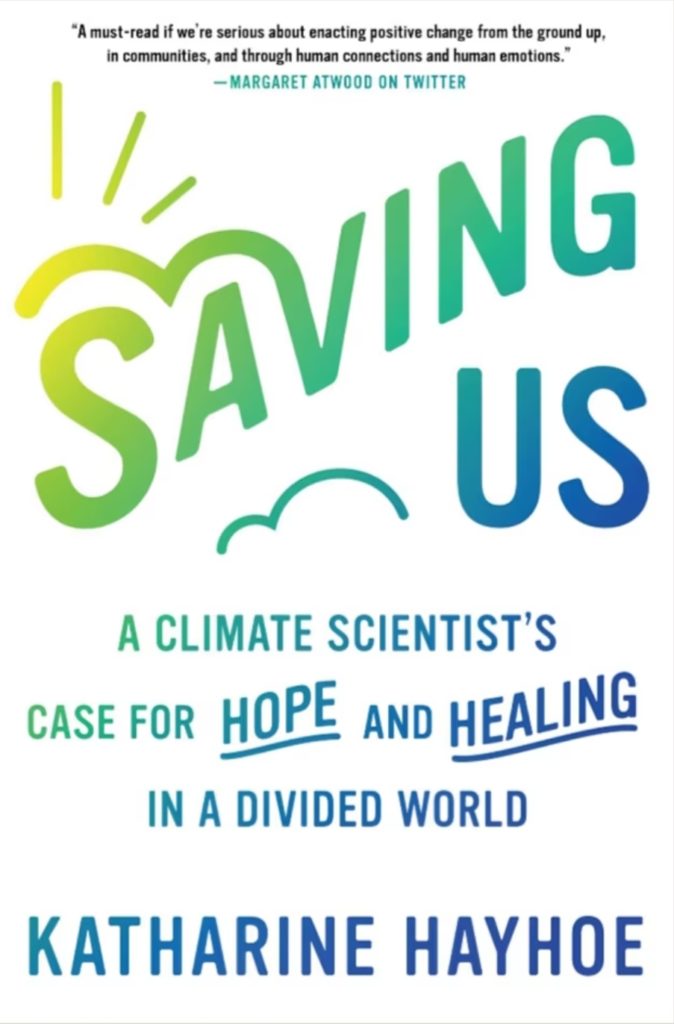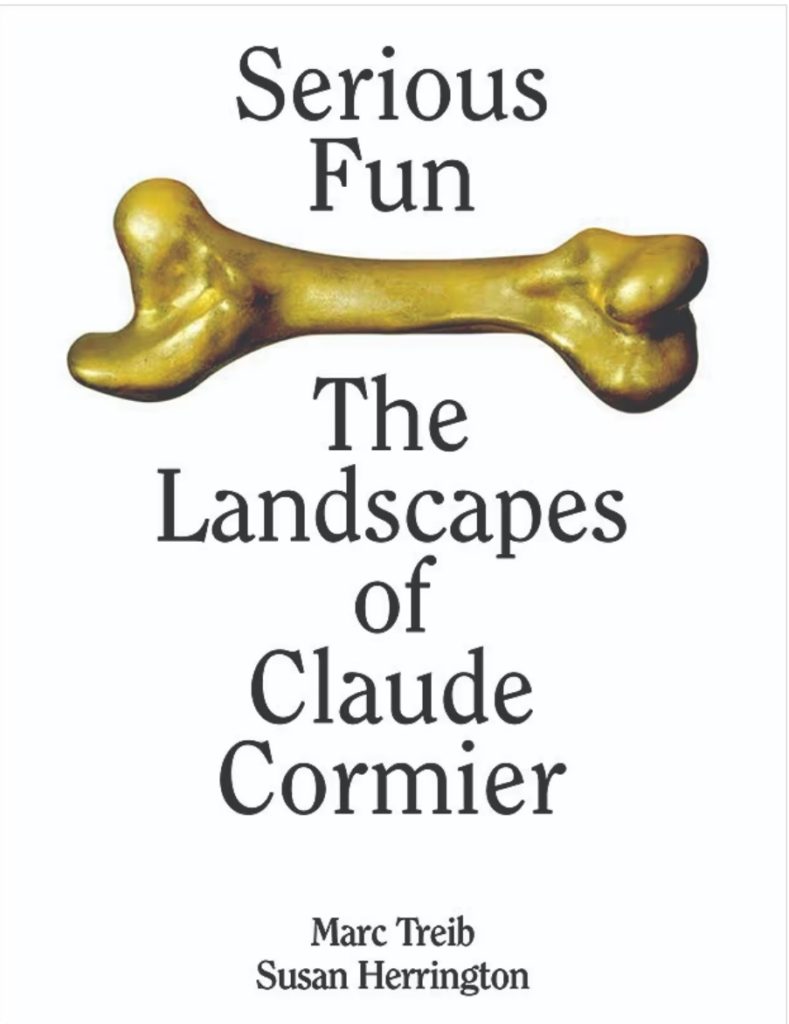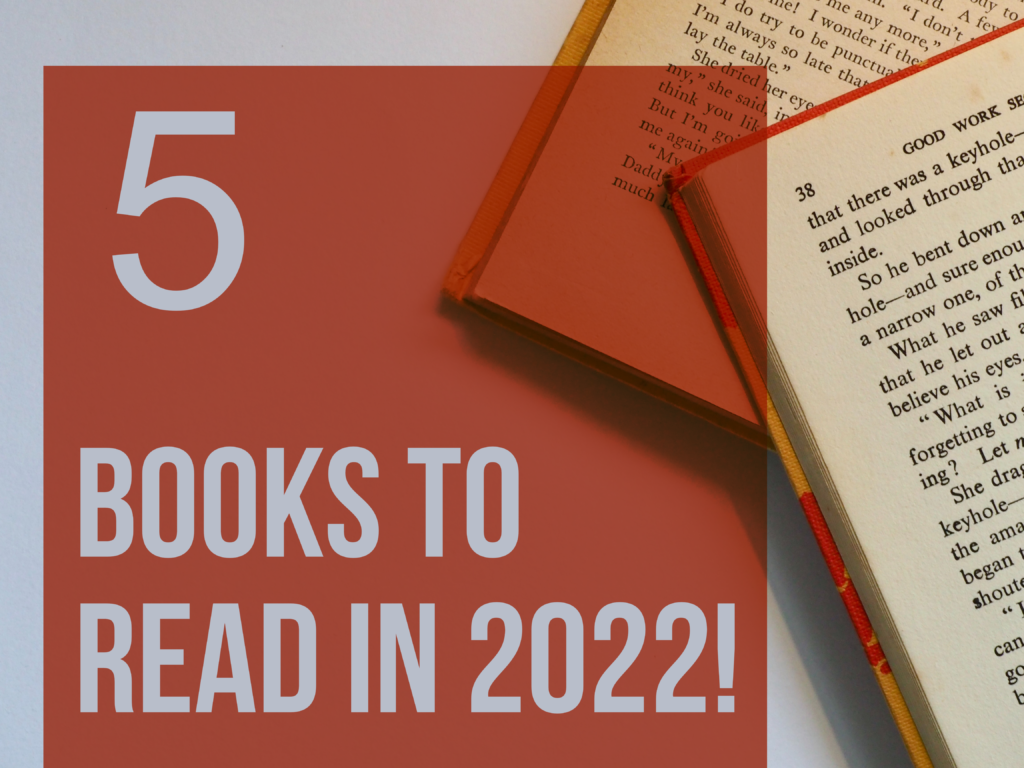Today’s article was written by one of our amazing team members, Jenny Trinh!
As someone who used to be an avid reader as a child and has grown into an adult with too many “adulting” things to do (like a 9-5 job, paying bills, doing chores, running errands, and trying to maintain some semblance of a social life during these strange times), I have a strong desire to make more time to read this year. As designers, reading is a significant way to continue to nourish our inner student. Gaining new perspectives and ideas, having an open dialogue about the many issues we face, and just giving ourselves dedicated time to think about these things will ultimately aid in our self-growth and career. Without further ado, here are 5 (non-fiction) books on my reading list year.

Book brief: Canadian climate scientist and chief scientist at the Nature Conservancy, Katharine Hayhoe, creates an outline on how to have meaningful and productive conversations on climate change with people of all backgrounds. She uses an evidence and compassion-based approach, strongly arguing against shaming people about an individual’s opinion.
This is precisely the kind of discourse we need amid the societal divide and unease over the past several years. The design and construction industry significantly contributes to global greenhouse gas emissions. Consumption and disposal of materials, especially concrete, place a significant toll on our environment. Thanks to new and advancing technologies that make sustainable solutions more affordable, we are optimistic about the future. However, we acknowledge there is still a lot to be done, including speaking to others about the significance of climate change and how we are expediting its effects on the planet. As designers, we have a responsibility to push science-based findings on climate change and promote sustainable prevention and mitigation strategies. The tricky part is figuring out how to have these conversations.

As the title suggests, Serious Fun is a fun addition to your library. Canadian landscape architect Claude Cormier and his Montreal-based practice Claude Cormier et Associés are well-known for their designs that balance humor, art, and sustainability. This book walks the reader through Cormier’s notable works, including Sugar Beach in Toronto and the public installation of 18 Shades of Gay in Montreal’s “gaybourhood.” On the surface level, Cormier’s work appears to be primarily fun and games, but upon closer inspection, it is evident that he and his team truly take a holistic approach to each project. On their website, their philosophy statement says, “We are deeply committed to the specific qualities of each site – its natural conditions, its cultural history, its sociology, its politics. We want to translate each unique situation into a bold and pleasurable design that will connect with people physically, sensually, and playfully. We want to wake our audiences up and force them to take a fresh look at their surroundings. Our work may be artificial; it’s also anything but fake.”
As someone who has studied their work in school and visited several of their projects, I’m very happy that this firm’s work, philosophy, and approach to design are being documented. They’ve made a name for themselves in the landscape architecture community for a good reason, too, and I am looking forward to getting to know the nitty-gritty details of some of their projects.

New York Times bestselling author Austin Kleon follows up his Steal Like an Artist with Show Your Work! He shares life lessons about becoming “findable,” sharing your work, and navigating the Internet as a creative. He emphasizes generosity over genius and self-discovery over self-promotion. This is an excellent read for all designers and creatives, especially those at a crossroads in their career or looking to strike out on their own! Even if you aren’t in either of those positions, navigating the online world and sharing high quality and quantity is good practice for future opportunities that may await.
I’m looking forward to this read. As a young professional who has stayed at the same firm since graduation, I’m interested in learning more about spicing up my professional career and reaching out to those around me to create a stronger community. I think Kleon’s philosophies of being findable, sharing your work, and self-discovery defy notions I often see in design professions and schools: safeguard your work in fear of idea-stealing, keep professional connections or any “leg-up” you may have over your peers closed, and designing as a goal rather than a journey. Foster a sense of community and seeing your design philosophy and career as self-discovery are great ways to turn the conversation on its head.

There’s been a notable rise in productivity and lifestyle content over the past few years, particularly during an anxiety-riddled time like the pandemic. It can be hard to make new habits sticks, and often we overreach when outlining our goals for personal growth, self-care, and career. James Clear makes a case for adopting improved “systems” rather than a string of individual goals and truly building healthy habits through behavior. Atomic Habits is a powerful book for anyone who wants to take control of their life and live it with intention! For a more in-depth description of the book, YouTuber Ali Abdaal created an excellent video breaking down the book.
I am a self-professed poor habit-builder. As someone who has fallen down the productivity rabbit-hole and listened to many-a videos about habit-building, this book particularly intrigues me with its “power of 1% change” concept. Maybe this will be the kick I need to build healthier habits and improve my self-care!

A classic read, Rasmussen’s Experiencing Architecture, is recommended to anyone interested in learning about architecture and young architecture students. This book is highly regarded as being very accessible in its analysis of good design and description of architecture. Rasmussen’s considerations for what makes “good design” are not confined to buildings. He explores even the most seemingly mundane everyday items, such as boots. You cannot go wrong with this read; it is truly a staple in the design student’s library.
Now, bear in mind that my background is in landscape architecture. I did not buy much into theoretical-based readings, and I sold myself short by telling myself I was not made out for these “intellectual” kinds of design books. Boy, am I kicking myself now. This is a solid back-to-basics book that I think those who have been out of school for many years can benefit from. I think this book will help me appreciate the design of every day and get myself thinking about the foundations of sound design.
So, which books are on your reading list this year? Do we have any common books? Or are there others that you would strongly recommend? I’m hoping to do a follow-up post on this at the end of the year (yes, this is me holding myself accountable for actually reading these books) and would love to know your thoughts. Well, that’s all we have for you today, and if you’ve made it this far, you deserve a cookie. I hope you found this article interesting and took something from it! We hope to provide you with valuable insights and share them with someone who might find this helpful. Make sure to follow our Youtube and Instagram for more content! Sharing is caring!
